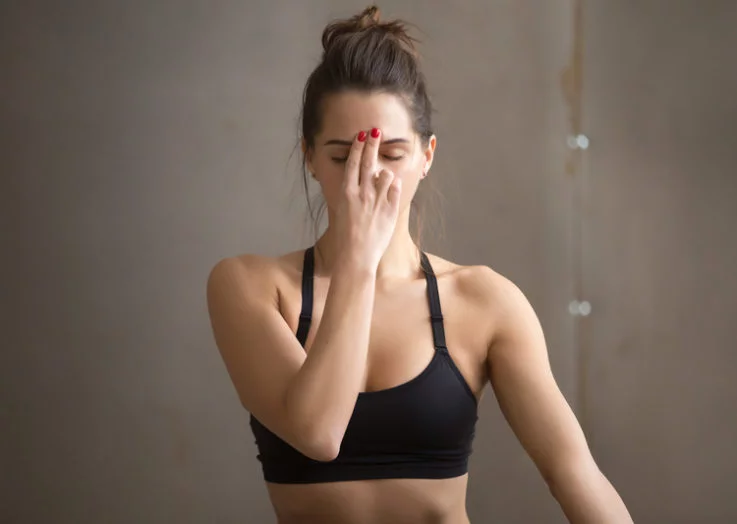While it’s something we do involuntarily all day every day, would you believe there are such things as breathing exercises? It’s true. Yes, most of us take our breathing for granted, never giving it a second thought. Now, in all fairness, breathing is (for the most part) done on a subconscious level. But, it’s one of the very few processes we also have the ability to control, and it can really be beneficial when we do.
What are the Benefits of Breathing Exercises?
Clearly, breathing is something you can’t do without, and you can definitely ignore it and go on with life (and survive). Thankfully! But, if you do regulate your breathing according to the activities you’re involved in, what are some of the benefits?
Once you explore the possibilities and benefits of breathing exercises, you may want to try learning to control your breath based on certain situation and activities you may be involved in. But, here are some power-packed benefits of breathing exercises:
- Calm yourself—using breathing techniques to calm yourself when you’re feeling stressed out or anxious.
- Go to sleep—sometimes, you need a little assistance going to sleep, especially if you seem to have a lot on your mind.
- Breathing during exercise—controlling and manipulating your breathing during exercise can help you get a better workout or a deeper stretch.
- Breathing for meditation—now, this type of breathing exercise is probably more familiar territory for most people, but it’s just one of many ways to benefit from controlling your breathing.
6 Incredible Breathing Exercises You Need to Be Doing
Remember, there are different breathing exercises you can use to accomplish different goals, and you will undoubtedly use various breathing techniques based on the situation at hand.
1. Stimulating Breath
This exercise is also called “The Bellows Breath” and is used to help wake yourself up and increase your level of alertness. Essentially, you are simulating the movement of a bellows. In case you forgot what a bellows is, it’s a flexible bag with two rigid boards on each side that, when squeezed together, cause a rush of air to be emitted. This breathing exercise helps increase alertness and raise your level of energy.
How to do the Stimulating Breath—with your mouth closed, breathe in and out extremely quickly through your nose. Aim for three sessions per second and try not to go past about 15 seconds at a time until you get acclimated to this type of breathing.
2. Relaxing Breath
This is probably what folks are referring to when they say “stop and take a breath” in stressful situations. It can help you slow down for a moment, center yourself, and gain perspective.
How to take a Relaxing Breath—just breathe slowly and deeply and focus exclusively on your breath until your heart rate settles and you begin to feel calmer again. Each in breath should take a minimum of two to four seconds as should your exhale.
3. Box Breathing
These breathing exercises can be extremely helpful if you’re feeling stressed or have unbridled thoughts churning in your mind that you can’t seem to harness. Since you can only focus on one thing at a time, this will help you release the thoughts as you focus on counting while you breathe.
How to do Box Breathing:
- Breathe in for a count of four.
- Hold your breath in for a count of four.
- Breathe out for a count of four.
- Wait for a count of four prior to breathing again.
4. Breathing for Sleep
Sometimes you just can’t seem to drift off, and counting sheep just might not be working for you. If this is the case, you can try what’s known as the 4-7-8 technique to help you deeply relax and get some zzzzzzs.
4-7-8 Technique—begin by forcefully pushing all your breath out. Next, slowly inhale through your nose for a 4-second count. Then, hold your breath for 7 seconds, and exhale again over an 8-second span.
5. Breathing for Focus
You can try alternate nostril breathing if you need to get focused or if you’re feeling lethargic.
Alternate Nostril Breathing—begin by placing your finger over your left nostril to close it off and breathe in deeply through your right nostril. Hold for a moment and then switch to closing off the right nostril and breathe out through the left. Repeat 3 times on each side.
6. Breathing for Exercise
When you are working out, it’s helpful to align your breathing with your repetitions to maximize the effectiveness of your workouts. Your heart and lungs are also main players when it comes to exercise, and the air you breathe is important for shuttling oxygen to the muscles.
How to breathe for exercise:
Typically, regulating your breath during exercise can be helpful, and it’s important to breathe according to the exercise you’re performing.
Keep breathing in rhythm with your movement.
Try to breathe in and out in equal amounts and don’t hold your breath.
If you are lifting weights, then breathe in as you perform the easy portion of the repetition, stabilize your core, and then breathe out forcefully as you engage in the most difficult part of the lift. You’ll often hear lifters breathing out sharply, and this is why. This type of breathing can also give you that extra special edge you need to power through those last reps.
If breathing for yoga, try focusing on your breath and inhale when you lift up or when you do movements which open your chest. Alternatively, exhale as you twist or bend.
Whether you’re stressed, are pushing some heavy weights, are trying to get the most out of a stretch, or are looking to improve sleep, don’t take your breath for granted. Breath work is free, easy, and may help you improve both health and performance. Give one (or more) of these a try and enjoy the benefits of breathing!









